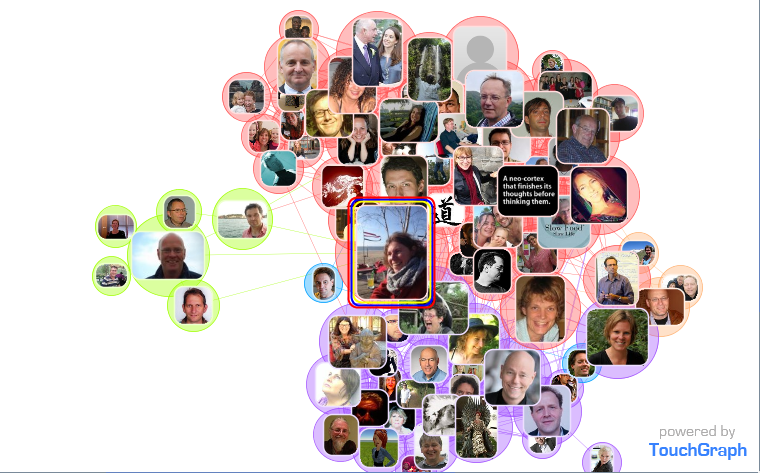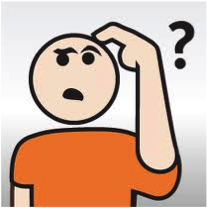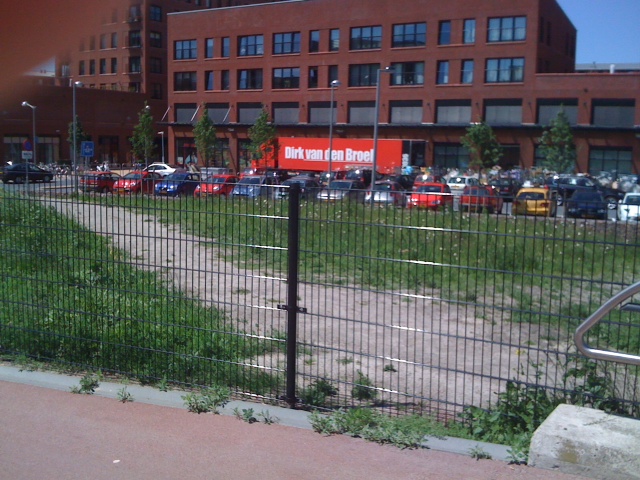It's good to distinguish between EGOnetwork analysis and whole network analysis. An EGOnetwork analysis is mapping the network of relationships of one person (usually your own network!). In Network analysis you identify a network, a friends network, a LinkedIn group or a community of practice, or in the course a dolphins network. There are some simple tools which can help you map your own social media network.

LEVEL 1 EASY
Tools in level 1 are the Egonetwork tools which are available on the web and which make it possible to analyse your network in one click. You may do this in 1-2 hours.
- With one click you can map your LinkedIn network (except if your network is too small or too large. It automatically colours the subnetworks. It is a good exercise to name these subnetworks. What kind of people would you like to have in your network.
- Egonetwerk analyse from your Twitter network. You can use tools like Mentionmapp or Vizify to map your Twitter network. There are lots of other tools to visualize and analyse your network , see 10 awesome tools to analyze and visualize your twitter network for inspiration.


- You can do an Egonetwork analysis of your Facebook network met Touchgraph - see pictures above. Just like with LinkedIn maps you can see subcommunities with different colours. Mijn main networks are my old IICD network and KM4dev/CPsquare networks. My friends network is the tiny part in green. That explains why I'm not that active on Facebook. You can actually do a lot of things with touchgraph, more than with linkedIn maps, like you can zoom in on your most important network, choose to show picture or names etc. See the examples above.
 LEVEL 2 INTERMEDIATE
LEVEL 2 INTERMEDIATE Level 2 are tools that take more time to understand and work with. You may need a day or so, even though it is possible to learn it with tutorials from the web, or ask someone who knows the tools. Niveau 2 zijn tools die je wel even onder de knie moet krijgen. Nevertheless the tools are free: Gephi and NodeXL are both free and open source.. NodeXL is for windows and works with Excel.
- You can download your Facebook network with Getnet http://snacourse.com/getnetand then import it in Gephi. The difference with touchgraph is that you can do more analysis for instance look at the most influential people in your network.
 an interesting way of doing Network analysis of social media is with NodeXL you can import for instance Twitter Hashtag tweets, or a network of a twitter account (@joitske). I haven't tried a lot yet with NodeXL, I have been struggling a bit with the labels. Importing at times takes long because Twitter only allow a certain amount of data to be downloaded, so be prepared to set it up and let it run for a couple of hours.
an interesting way of doing Network analysis of social media is with NodeXL you can import for instance Twitter Hashtag tweets, or a network of a twitter account (@joitske). I haven't tried a lot yet with NodeXL, I have been struggling a bit with the labels. Importing at times takes long because Twitter only allow a certain amount of data to be downloaded, so be prepared to set it up and let it run for a couple of hours.

LEVEL 3 DIFFICULT
The highest level of difficulty is doing a whole Network analysis with tools like Netdraw and Gephi. It is important to understand network measures like centrality measures and sub communities. It takes investment in knowing network theory and software.
- Network analysis with Gephi. The SNA course used Gephi and I find it impression what you can calculate and analyse like average shortest path, modularities etc. I think it takes a good comparison with other networks to interprete these kind of overall network characteristics. See below a Gephi example.

- Similar to Gephi you can do Network analysis with Netdraw. So far I am very impressed with what you can do in Netdraw, especially the way you can visualize parts of the network and zoom in. For instance, if you have a network with agriculturalists, policy makers and advisors, you can plot the network of the advisors separately if you like. We did that for a large network zooming in on the provinces which was very useful to have a view of the network at provincial level.


